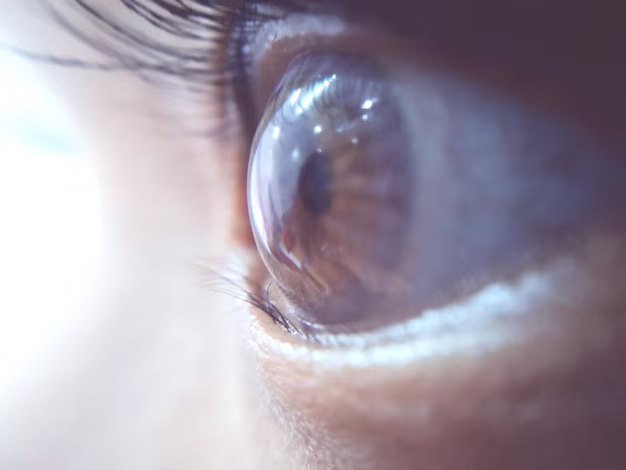Understanding Cataracts: How They Develop and What You Can Do
Cataracts are a common condition that affects millions of people worldwide, often leading to impaired vision as a natural part of aging. But what exactly are cataracts, and how do they develop? This comprehensive guide will delve into the mechanics behind cataract formation, the risk factors involved, and practical insights you can use to understand this prevalent eye condition.
What Are Cataracts?
Cataracts occur when the lens of the eye becomes cloudy, impairing vision. This cloudiness can cause blurred vision, difficulty with glare, faded colors, and even double vision in one eye. A cataract forms slowly and initially might not disrupt your eyesight significantly, but over time, it can severely impact your vision.
Types of Cataracts
While cataracts are generally related to aging, they come in various forms, including:
- Nuclear Cataracts: Develop in the central zone (nucleus) of the lens. They are most commonly associated with aging.
- Cortical Cataracts: Start in the cortex of the lens and progress inward. This type may cause white, wedge-like opacities that start at the edge of the lens.
- Posterior Subcapsular Cataracts: Form at the back of the lens and can interfere with reading vision, reduce vision in bright light, and cause glare or halos around lights at night.
How Do Cataracts Develop?
The precise cause of cataracts is not completely understood, but they are largely an aging-related process. Here are some key factors and processes involved:
Protein Clumping in the Lens
As you age, the lenses in your eyes become less flexible, less transparent, and thicker. Proteins in the lens begin to break down and clump together, forming dense areas known as cataracts. This clumping blocks or scatters light, leading to blurred or foggy vision.
Oxidative Stress
The eye's lens is particularly vulnerable to oxidative stress—damage caused by free radicals or unstable molecules which can alter cells in the eye. Over time, this stress damages the proteins and cell membranes within the lens, contributing to cataract formation.
Risk Factors for Cataracts
Understanding the risk factors can help you stay alert to changes in your vision:
- Age: Cataracts are most common in older adults, frequently forming after the age of 60.
- Genetics: A family history of cataracts increases your risk.
- Sunlight Exposure: Prolonged exposure to ultraviolet (UV) rays from the sun can accelerate cataract formation.
- Medical Conditions: Diabetes is a significant risk factor; high blood sugar levels can cause clumping of lens proteins.
- Lifestyle Choices: Smoking, excessive alcohol consumption, and poor diet can all contribute to the development of cataracts.
- Medications: Long-term use of steroids has been linked to an increased risk of cataracts.
Summary of Key Risk Factors
- ✨ Age: Predominantly those 60 and older
- 🧬 Genetics: Family history can play a role
- 🌞 Sunlight: UV exposure accelerates risk
- 🩺 Health Conditions: Diabetes impacts lens protein
- 🚭 Lifestyle Choices: Smoking, alcohol, and diet matter
Symptoms of Cataracts
Recognizing the symptoms early can help you take action promptly. Common indicators include:
- Blurry or Clouded Vision: This is often the first noticeable symptom.
- Difficulty with Night Vision: Many find night-driving challenging.
- Sensitivity to Light and Glare: Especially noticeable in bright sunlight or artificial light.
- Changes in Color Perception: Colors may appear faded or less vibrant.
- Frequent Prescription Changes in Eyeglasses or Contact Lenses: As cataracts develop, vision changes frequently require a new prescription.
Cataract Prevention and Management
While certain risk factors such as age and genetics are uncontrollable, lifestyle choices can play a pivotal role in managing and potentially delaying the onset of cataracts.
UV Protection
Wearing sunglasses that block both UVA and UVB rays can protect your eyes from harmful solar radiation. Donning a hat with a brim provides an extra layer of defense.
Healthy Diet
A diet rich in antioxidants, vitamins, and minerals supports eye health. Foods like leafy greens, fruits, and fish rich in omega-3 fatty acids are particularly beneficial.
Regular Eye Exams
Routine eye examinations can help detect cataracts and other eye conditions in their early stages. Early detection is crucial in managing your eyesight.
Lifestyle Modification
Quitting smoking, moderating alcohol consumption, and keeping manageable control of health conditions like diabetes can dramatically influence cataract development.
When to Consult a Specialist
If you experience any cataract symptoms or vision changes that disrupt your daily life, consider seeking advice from an ophthalmologist. They can determine if cataract surgery—a common procedure to restore vision—is necessary.
Cataract Surgery
Cataract surgery is a routine and highly successful procedure, often performed on an outpatient basis. It involves removing the cloudy lens and replacing it with an artificial one, restoring clear vision.
What to Expect During Surgery
Before surgery, your surgeon will measure your eye to choose the right lens type for you. The procedure itself is typically painless due to local anesthesia, and most patients experience improvements in their vision within a few days post-surgery.
Post-Surgery Care
After surgery, following your surgeon's advice is essential for a smooth recovery. Avoid strenuous activities and remember to wear protective eyewear.
Final Thoughts
Cataracts are a common part of aging, but they need not severely impact your quality of life. By understanding how cataracts develop and recognizing the symptoms, you can take proactive steps in managing your eye health. Prioritizing regular eye exams and following a healthy lifestyle can greatly reduce your risk.
🔍 Key Takeaways
- Cataracts lead to cloudy lens vision, often necessitating surgical intervention.
- Risk factors include aging, genetics, and lifestyle choices.
- Symptoms include blurred vision, difficulty seeing at night, and sensitivity to light.
- Prevention involves eye protection, a healthy diet, and regular eye exams.
Maintaining a vigilant approach to eye health can help protect your vision and allow you to see clearly through the years.
